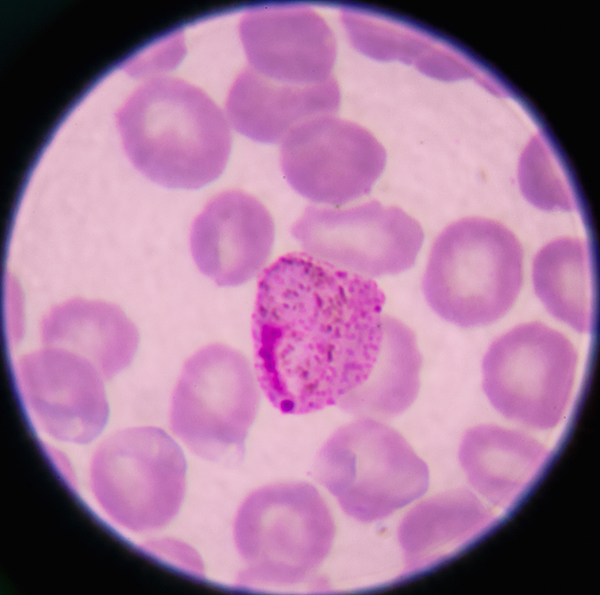WEDNESDAY, Oct. 26, 2016 (HealthDay News) — Using genetic analyses of 40-year-old blood samples, scientists have arrived at a clearer understanding of the introduction and spread in North America of the virus that causes AIDS.
One myth already debunked by the research: That there was a “Patient Zero” who somehow caused the epidemic of human immunodeficiency virus (HIV) in the United States.
“In many ways, the historical evidence has been pointing to the fallacy of Patient Zero for decades,” said Dr. Richard McKay, who studies the history behind the AIDS epidemic and was a co-author on the new study.
“We now have additional [genetic] evidence that helps to consolidate this position,” McKay said in a news release from the University of Cambridge in England. He is a professor in the university’s departments of history and philosophy of science.
The new genetic research was published Oct. 26 in the journal Nature and was led by Dr. Michael Worobey, of the University of Arizona. In their study, scientists used high-tech methods to compare the genetic blueprints (genomes) of HIV derived from blood samples dating from the late 1970s.
The samples came from eight HIV-infected patients. Similar DNA data from a ninth patient, Gaetan Dugas, had already been recorded.
Dugas was a French-Canadian who died of AIDS in 1984 and was posthumously blamed as being the HIV epidemic’s so-called “Patient Zero” in later media reports.
Based on Worobey’s new work, the truth of the virus’ spread in North America appears to differ greatly from the notion that it originated with one infected man.
Tracing genetic markers in the various stored blood samples, the scientists concluded that HIV arrived in the United States in New York City in about 1970 — more than a decade before it was officially identified by doctors — and then spread across North America.
The results confirm prior findings on how HIV entered and spread through the United States. They also conclusively prove that the Caribbean region was a crucial steppingstone from which HIV entered North America from its origins in Africa, according to the Arizona researchers.
The researchers also achieved the first recovery of the full HIV-1 genome from Dugas’ blood sample, and showed there is no proof that he was the primary cause of the HIV/AIDS epidemic in North America.
After first arriving in New York City, HIV spread to San Francisco and likely other locations in California. In June of 1981, the first published report of a cluster of cases of U.S. patients with the symptoms of AIDS appeared in a journal from the U.S. Centers for Disease Control and Prevention.
“In New York City, the virus encountered a population that was like dry tinder, causing the epidemic to burn hotter and faster and infecting enough people that it grabs the world’s attention for the first time,” Worobey explained in a University of Arizona news release. He’s an expert on viral evolution and head of the department of ecology and evolutionary biology at the University of Arizona.
“Our analysis shows that the outbreaks in California that first caused people to ring the alarm bells and led to the discovery of AIDS were really just offshoots of the earlier outbreak that we see in New York City,” Worobey said.
And Dugas, a flight attendant with contacts on both U.S. coasts, may have been just one of thousands of North Americans infected with HIV at the time — not the sole patient responsible for igniting the AIDS epidemic, McKay added.
Indeed, Dugas was instrumental in helping researchers better track and understand HIV’s origins in North America. He supplied blood samples, plus the names of 72 sexual partners he’d had over the three years before 1982. Dugas was only one of many men at that time who were infected with HIV and had multiple sex partners, McKay said.
However, “the fact that Dugas provided the most names, and had a more memorable name himself, likely contributed to his perceived centrality in this sexual network,” McKay said.
Too often, however, the phrase ‘Patient Zero’ is a fallacious — but linguistically “infectious” — cliche in any discussion of a disease oubreak, McKay believes.
“Long before the AIDS epidemic there was interest in locating the earliest known cases of disease outbreaks,” McKay said. “Yet the phrases ‘first case,’ ‘primary case,’ and ‘index case’ didn’t carry the same punch,” until the AIDS crisis and “Patient Zero,” he said.
Learning more about how the HIV pandemic began and spread remains important work, Worobey added, because of recent advances against HIV.
“Now we can now look forward in time and really see a future in which — even if the virus is not completely eliminated — it could be driven down to no new transmission in large swaths of the world,” Worobey said.
He believes that genetic tests developed in the new study could lead to more sensitive tests that detect HIV earlier in people who were infected very recently — but who don’t yet know it.
“Earlier detection and better alignment of the various options we have to make it harder for the virus to move from one person to the next are key to driving HIV out of business,” Worobey said.
Also, insights gained from the study may help improve knowledge about how pathogens move through populations and lead to more effective ways to control or eradicate dangerous germs, according to the researchers.
And, McKay hopes, “this research will give researchers, journalists and the public pause before using the term Patient Zero. The phrase carries many meanings and a freighted history, and has seldom pointed to what its users have intended.”
More information
The U.S. Centers for Disease Control and Prevention has more on HIV/AIDS.
Copyright © 2025 HealthDay. All rights reserved.

